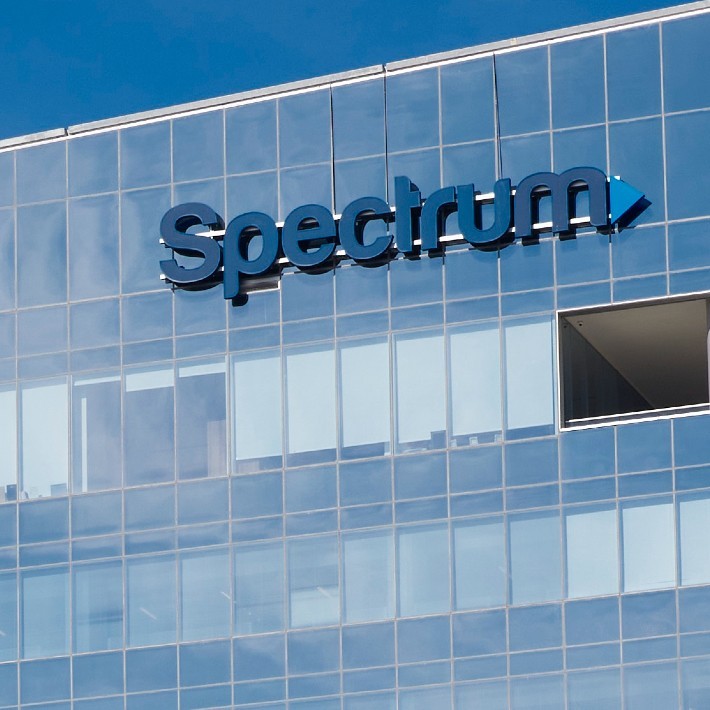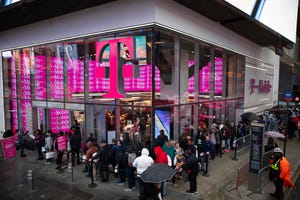Charter to test mmWave enhancements to 5G in Charlotte
Charter wants to test a 5G network in 37GHz millimeter wave (mmWave) spectrum as an enhancement to its 3.5GHz CBRS network in Charlotte, N.C.

A new FCC testing request from cable giant Charter Communications hints at the company's interest in adding millimeter wave (mmWave) spectrum to its 3.5GHz CBRS network in Charlotte, N.C.
Broadly, the request helps to underscore again Charter's overall interest in building its own 5G network as a way to reduce its reliance on Verizon's 5G network. And it indicates that Charter is willing to invest into mmWave technology, like Verizon, as a way to speed up that network.
"Charter Communications seeks an experimental license ... to test and evaluate millimeter wave 5G waveform coverage and capacity in the 37GHz band (37.0 - 37.6GHz)," the company wrote in its new filing to the FCC. "The tests will be done in conjunction with CBRS band ... Charter plans to characterize impact under several permutations, including different power, transmitter height and locations, and also quantify mmWave coverage and throughput with CBRS as an anchor. The proposed operations will advance Charter's understanding of potential of 37GHz data aggregation with mid band spectrum as an anchor."
A Charter representative declined to comment beyond the filing.
Charter, for its part, ended the first quarter of 2023 with nearly 6 million mobile lines – an impressive figure considering the company entered the US wireless industry as a Verizon MVNO just a few short years ago. The company has also indicated its interest in expanding its mobile play by deploying its CBRS spectrum broadly in high usage areas that can generate the best return on investment. However, CEO Chris Winfrey stressed recently that Charter is "not in a rush" to roll it out because of the benefits it's continuing to see from its MVNO pact with Verizon.
Slowly but surely
Gary Koerper, SVP of emerging technology for Charter, recently laid out the company's broad 5G strategy. He said Charter is hoping to build a hybrid network that spans fiber and DOCSIS on the wired side and Wi-Fi and 5G on the wireless side. And in terms of the spectrum bands that Charter wants to use for 5G, Koerper specifically called out the 3.1GHz-3.45GHz band, the 7GHz band, and the 37GHz band in addition to the CBRS band.
To be clear, Charter hasn't yet launched its own 5G network. The company's Spectrum Mobile offering still works exclusively on Verizon's network. But Charter continues to make concrete progress toward operating its own 5G network. For example, the company spent around $465 million in 2020 for CBRS spectrum licenses in its cable footprint. It also completed the buildout of its mobile core network in the first quarter of 2022, and company officials recently confirmed the company is operating a CBRS network in one large, unnamed market. (Based on Charter's recent FCC filing, it's possible that the unnamed market is Charlotte.)
Earlier this month, Charter said it will use equipment from Nokia for its planned network. Financial terms weren't announced, but Nokia said the Charter deal includes 5G RAN gear, baseband units and newly developed strand-mounted CBRS small cells. Nokia said Charter will use its 5G gear to deliver mobile traffic in "strategic locations" across the operator's 41-state footprint.
However, Charter has been hinting at its interest in building a 5G network for years now. Indeed, CEO Winfrey said Charter's new MVNO agreement with Verizon – inked in 2021 – is so good that it "actually reduced some of the incentive to go hard and fast."
If Charter ultimately adds 37GHz to its CBRS network, it would be employing Verizon's 5G strategy but in reverse. Verizon started its 5G buildout with mmWave spectrum in 2018 and has since worked to add CBRS spectrum to the mix. CBRS is considered midband spectrum, though its propagation is limited by relatively diminutive power levels. Lowband spectrum, like Comcast's 600MH, is considered ideal for covering wide geographic areas. Meanwhile, mmWave spectrum can only cover small geographic areas, but it can support blazing fast speeds.
Related posts:
— Mike Dano, Editorial Director, 5G & Mobile Strategies, Light Reading | @mikeddano
About the Author(s)
You May Also Like












